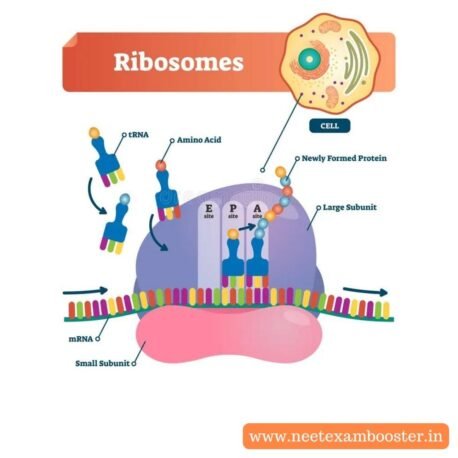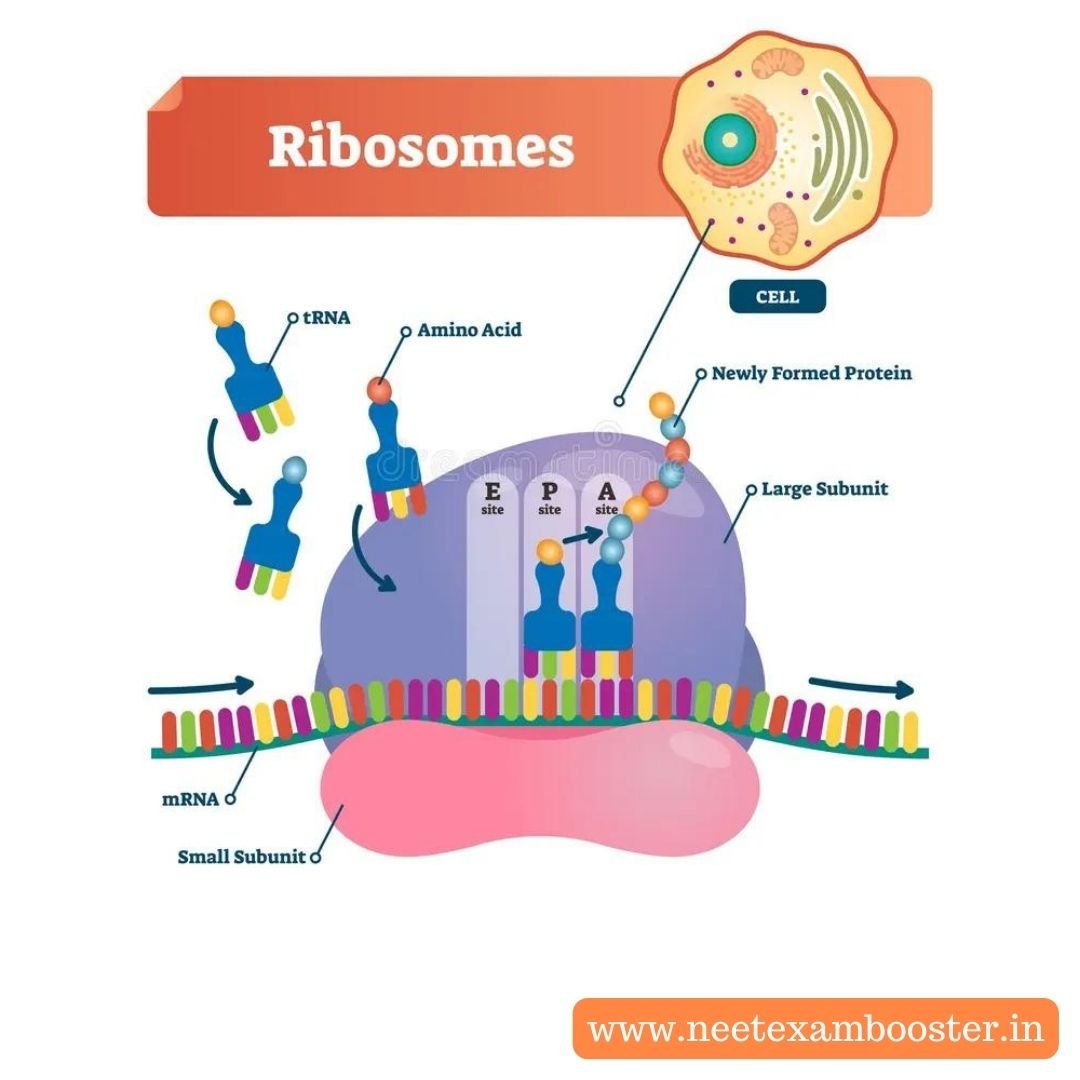Ribosomes are naked ribonucleoprotein particles present in both eukaryotic and prokaryotic cells. They were first discovered in animal cells by Robinson and Brown in 1953 and in plant cells by Palade in 1955.
Ribosomes – Definition and Function
- A ribosome is an organelle that helps cells make proteins they need to function.
- Ribosomes are found in both prokaryotic and eukaryotic cells, in the cytoplasm or on the endoplasmic reticulum.
- Prokaryotic cells have 70s ribosomes, while eukaryotic cells have 80s ribosomes, named after their sedimentation coefficients.
- The primary function of ribosomes is to assist in protein synthesis.
- Ribosomes on the rough endoplasmic reticulum make proteins for both intracellular and extracellular use.
- Ribosomes are composed of around 2/3 RNA (ribonucleic acid) and 1/3 protein.
- They are made in the nucleolus of the nucleus and are composed of two main RNA-protein complexes, the larger and smaller subunits.
- In prokaryotic cells, the smaller subunit is 30s, and the larger subunit is 50s; in eukaryotic cells, smaller subunits are 40s, and larger subunits are 60s.
- Subunits join together when a ribosome is needed for protein production, forming a “messenger RNA sandwich.”
- Transfer RNA (tRNA) and amino acids play crucial roles in translation, one of the main steps in protein synthesis.
- Translation consists of three main steps: initiation, elongation, and termination.
- During initiation, the ribosome sandwich is formed, and amino acids are joined together in the growing peptide chain.
- Elongation involves the continued growth of the peptide chain as more amino acids are added.
- Termination occurs when the ribosome sandwich breaks apart, and the newly formed protein is released into the designated part of the cell.

- Ribosomes can be found in the cytoplasm of both prokaryotic and eukaryotic cells, as well as in chloroplasts and mitochondria.
- Prokaryotic ribosomes have a sedimentation coefficient of 70S, while eukaryotic ribosomes have a sedimentation coefficient of 80S.
- Ribosomes consist of two subunits: a larger and a smaller one.
- The larger subunit in prokaryotes has a sedimentation coefficient of 50S and in eukaryotes, it has a sedimentation coefficient of 60S.
- The smaller subunit in prokaryotes has a sedimentation coefficient of 30S and in eukaryotes, it has a sedimentation coefficient of 40S.
- Ribosomes are made up of ribosomal RNA (rRNA) and proteins.
What Is Mitochondria?
- Ribosomal rRNA not only forms the structure of the ribosome but also has enzymatic or catalytic action.
- The larger subunit of the ribosome has three-dimensional cavities called the A-site, P-site, and E-site.
- These sites are responsible for the protein synthesizing capacity of the ribosome.
- Ribosomes sometimes occur singly or in chains known as polysomes or polyribosomes.
- Polyribosomes are found in cells where the same messenger RNA (mRNA) is being translated several times by a number of ribosomes to form large copies of the same protein.




















Pingback: What is Nomenclature? Definition & Meaning